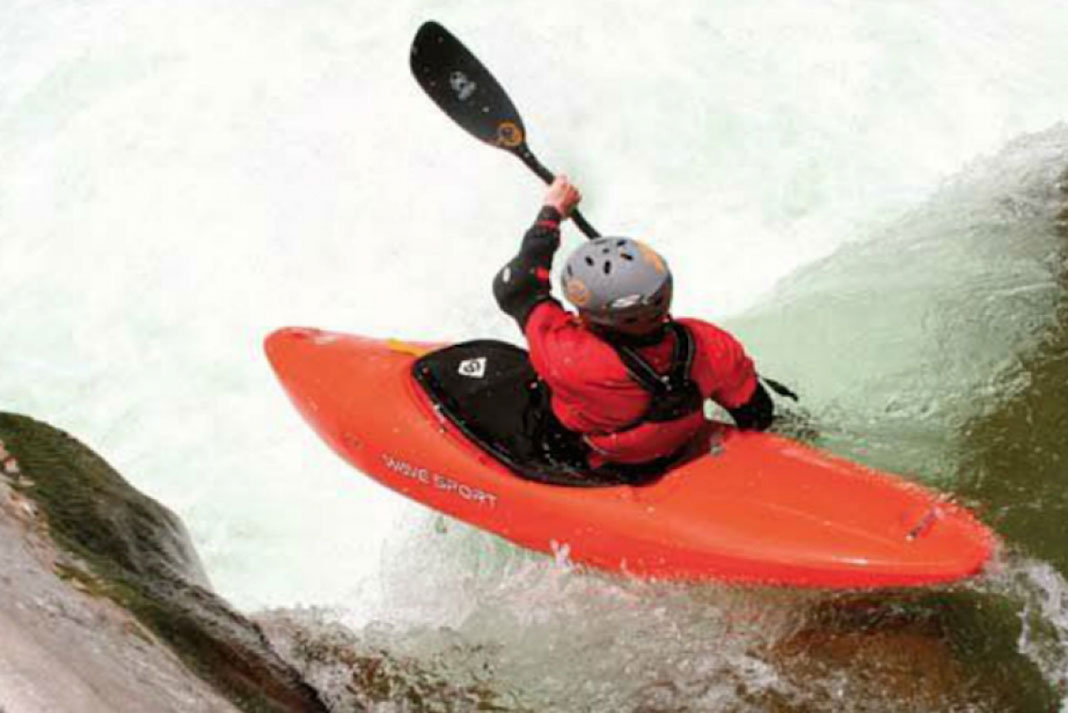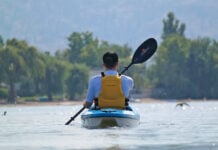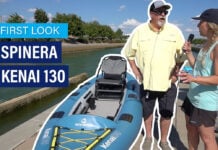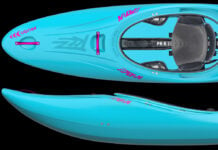WaveSport began hyping its first real creek boat, the “Y”, way back in the 1990s. Since then, we have watched as the Y remained WaveSport’s trusty creek boat while they introduced and replaced seven different freestyle models. Creek boat sales don’t merit the same research and design budgets as freestyle, and the Y lived on by popular demand. Now it has a worthy successor in the new WaveSport Habitat kayak.
WaveSport Habitat
74 / 80 SpecsLength: 8’ / 8’4”
Width: 25” / 25.5”
Depth: 13.5” / 14”
Weight: 41 / 42 lbs
Volume: 74 / 80 gal
Paddler Weight: 100-200 / 150‑260 lbs
MSRP: $1,000 USD or $1,249 CAD
The WaveSport Habitat is at home on the creek
Robert Peerson, WaveSport’s head designer, has been working on Habitat prototypes for more than two years. He has finally decided on two sizes, the 74 and 80, that Peerson says give him some flexibility in the design.
“Although both are based off the same design principles, the smaller-sized Habitat with its shorter length and volume distribution lends itself to smaller paddlers and tight and steeper creeks. The larger Habitat, with its longer length and high float volume distribution, lends itself to larger rivers with a lot of storage capacity for overnight trips.”
Creek boats like the Pyranha Micro and Dagger CFS are great for very tight technical rivers but were virtually impossible to pack gear inside. Today, the trend for creekers is to carry a little more hull speed and more gear. The WaveSport Habitat borrows from Liquidlogic’s lead by making the stern easy to access with a snap-away back band and low-profile seat. Small items can be packed under the seat through slots at the front.
Stay safe in your Habitat
In the past 10 years the most important creek boat design advancements have been in paddler safety. WaveSport has created its own plastic front pillar that aids a pinned paddler in stepping out of the cockpit and doubles as a wonderful handle when portaging.
On the deck of the WaveSport Habitat you’ll find the now-standard five grab loops and anchor points—two at the ends and three around the cockpit. The metal bars are sexy and surely strong but bbrrr, they’re cold. A rubber tube slide over top would have been a nice touch. To finish off the outfitting: the recess’ drain plug is well protected and using the hull to hold the stern pillar results in fewer holes and hardware.
Lay it flat or get on edge
The Habitat is noticeably asymmetrical, with the widest and flattest point around your knees. We suspected this was to produce a fish-form shape to increase speed, but Peerson says the volume and width up front is for stability. As you move back to the stern, the hull becomes more displacement-like with high chines. “This shape allows you to use the edges for tracking and stability to carve into turns. Placing these edges high helps me keep them out of the way when scraping down shallow slides,” Peerson says.
It’s almost like the WaveSport Habitat is two completely different boats, depending whether or not you are using the chines. Keep it flat, and it feels like a spinny, high-volume, forgiving creek boat. Lay it over on edge and it wakes up, carving into edits more like a hybrid river-runner such as the Diesel. On edge it feels like it increases the waterline and jumps up to a faster hull speed and carve.
Need a reliable, modern creeker? Get in the Habitat
WaveSport needed a new model with performance and safety features of a modern full-on creek boat, plus the accessibility of an overnight duffel. Did WaveSport nail it? There is no doubt in our minds the Habitat will stand the test of time and provide you with years of reliable creeking.
Follow us on Instagram @paddlingmagazine for juicy kayaking photos.










Where and when can I view it